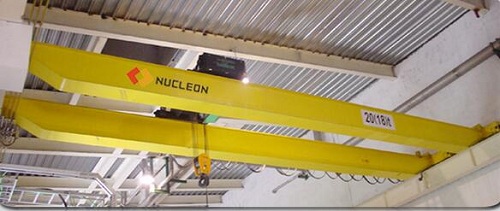Overhead Crane hook
Overhead Crane hook down automatically causes and troubleshooting methods

When the Overhead Crane in the operation, the hook automatically drop failure. Check found that as long as starting the engine, the hook began to decline in the valve and the cab can hear the oil flow sound. The phenomenon disappears after the engine turns off.
Analysis that the engine is no longer down after the hook off, indicating that no problem with the winch brake. After analyzing the hydraulic system diagram of the machine, only the control handle moves the pilot oil into the control valve to open the winch brake. As the hook does not need electrical control, it can also be excluded from the electrical aspects of the possibility of failure, the problem should be in the hydraulic system.
By analyzing the hydraulic system diagram, to determine the fault point should be in the cab control handle to the hoisting valve between. First check the cab control handle pilot control oil, observe the oil flow situation. When the handle is in the middle of the control of the hook down the tubing without oil, thus indicating the handle control is no problem. And then unpacked gale valve, found in the main valve core within a lock spring break, resulting in self-locking due to self-locking and automatic decline.
There are 3 sets of control valves with the same structure as the winch control valve, one of which is a spare valve. The spare valve has the same parts as the hoisting control valve, and no tubing is installed. As there was no accessory, the spare valve will be a spring removed to install the hoisting valve, again test machine hook automatically drop failure disappeared.
After the repair of the Overhead Crane although the test machine is normal, but then the engine will automatically turn off the phenomenon, while the hook shaking, and the engine can not start automatically after the flame. After cutting off the power take-off, start normal, connected to the power take, can not start.
Analysis of the hydraulic diagram found that the spare valve is not connected with any tubing, but the hydraulic pump output of the oil will flow through the spare valve. If the spare valve spool action, the oil flow will impact the hoisting valve, causing the hook trembling. At the same time as the spool can not automatically return to the spring, resulting in increased load, the engine power shortage, or even unable to start.
After installing the spare valve spring, the fault disappears. The troubleshooting process shows that the spring in the spare valve is also useful and can not be easily removed.
